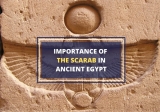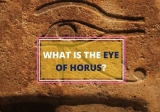In Egyptian mythology, most gods had animal representations or were portrayed as animals themselves. That is the case of Babi, the baboon god of the ...
In Egyptian mythology, Hathor was a goddess of the sky, of fertility, women and love. She was one of the most important Egyptian goddesses who was ...
In Egyptian mythology, Satet was a goddess associated with hunting, archery, war and fertility. She was worshipped as a guardian of her people and her ...
In Egyptian mythology, Thoth was a moon god, and a deity of languages, learning, writing, science, art, and magic. Thoth’s name meant 'He who is like the ...
The name Bes referred, in Ancient Egypt, not to a single god but to a number of gods and demons, who were responsible for guarding fertility and childbirth. ...
In Egyptian mythology, Amunet was a primordial goddess. She preceded the great gods and goddesses of Egypt and had connections with the creator god Amun. ...
The Sesen is the lotus flower used extensively in Egyptian art, and represented the power of the sun, creation, rebirth, and regeneration. The lotus flower ...
In Egyptian mythology, Nekhbet was the Mother of Mothers and the patron and protector of the city of Nekheb. She also protected and guided the royal ...
The scarab is one of the most frequently seen symbols in Egyptian culture, mythology, and hieroglyphics. That’s hardly surprising given how common the ...
The Eye of Horus is one of the most popular and yet most misunderstood ancient Egyptian symbols. It was found everywhere - in hieroglyphics, artwork and ...
- « Previous Page
- 1
- 2
- 3
- 4
- 5
- …
- 7
- Next Page »












